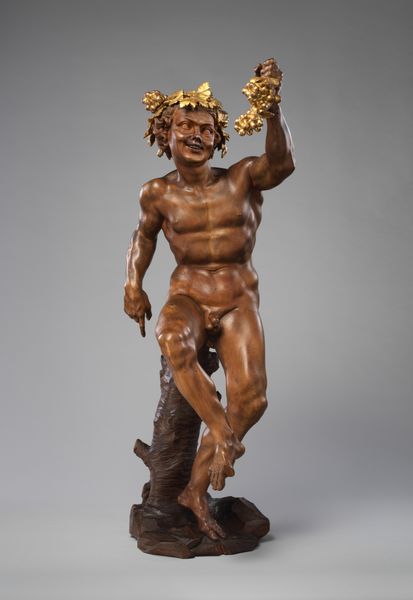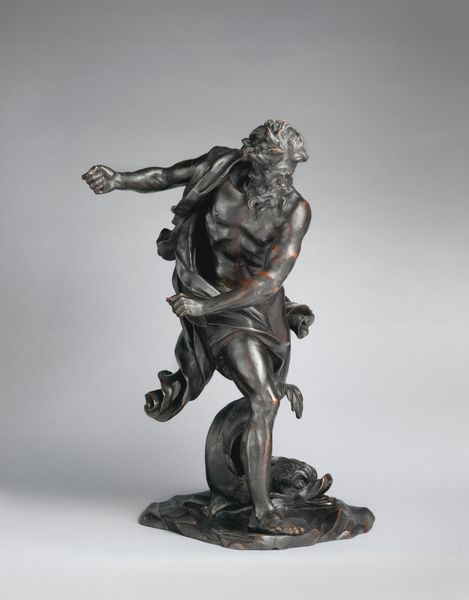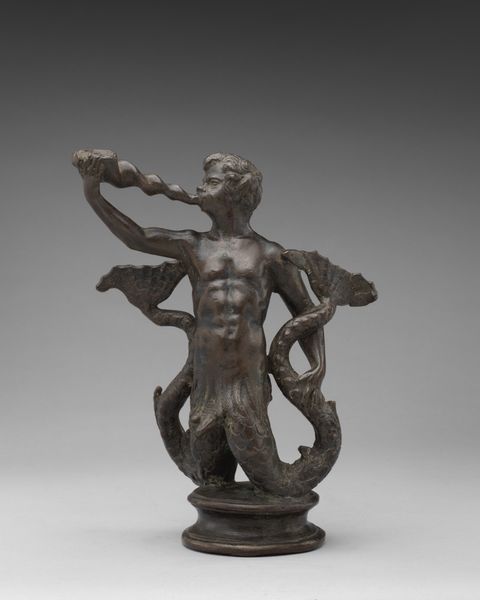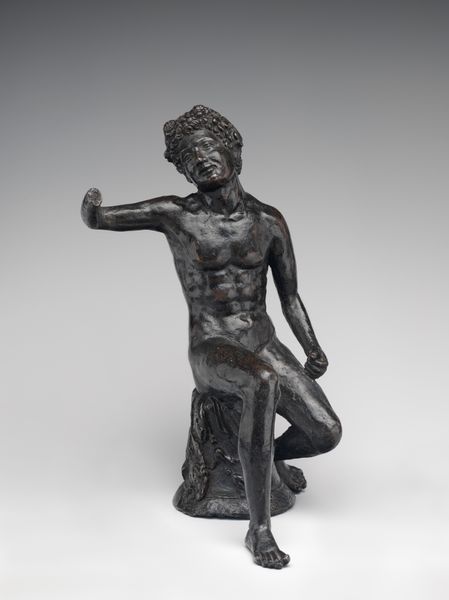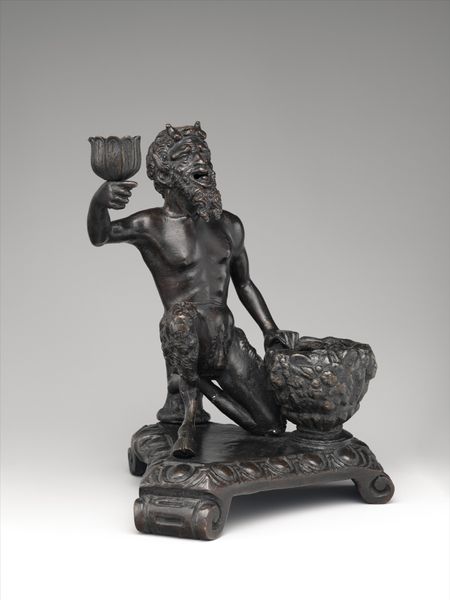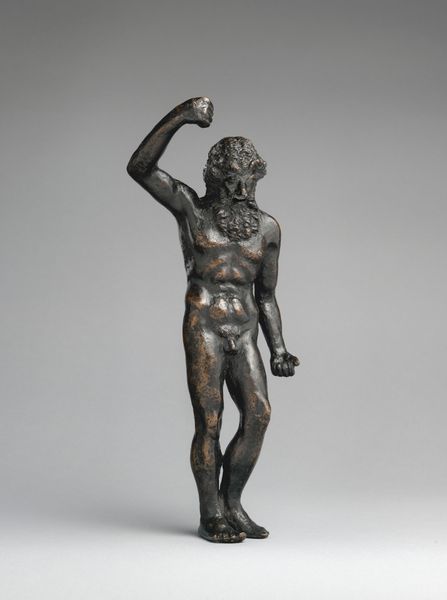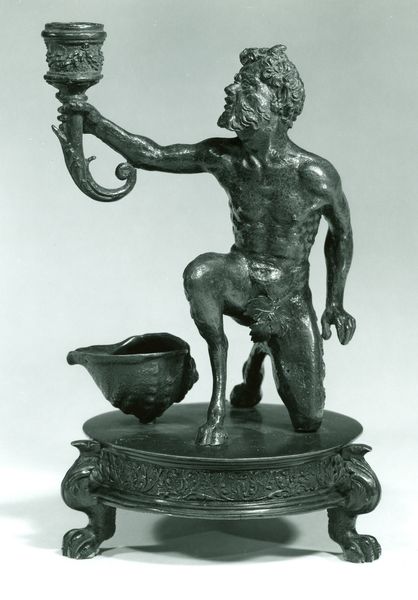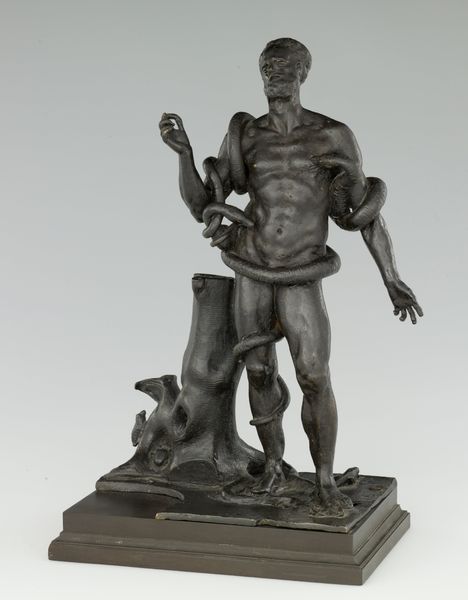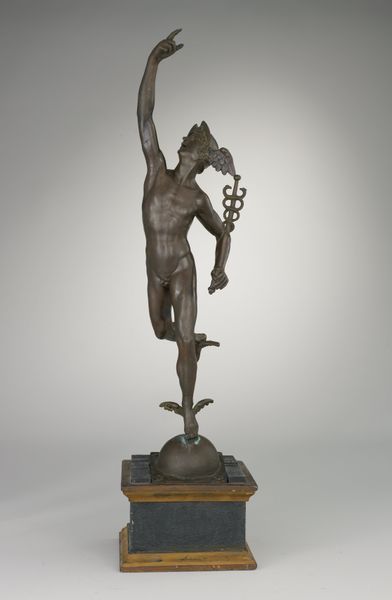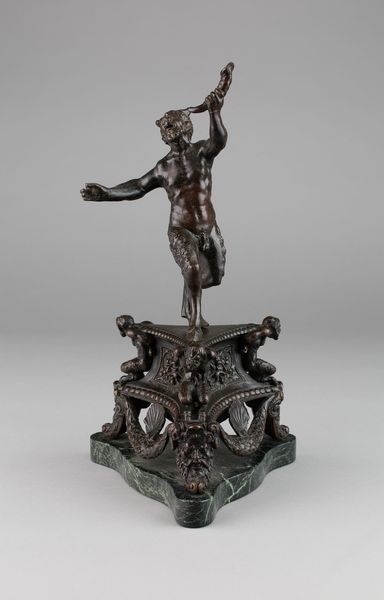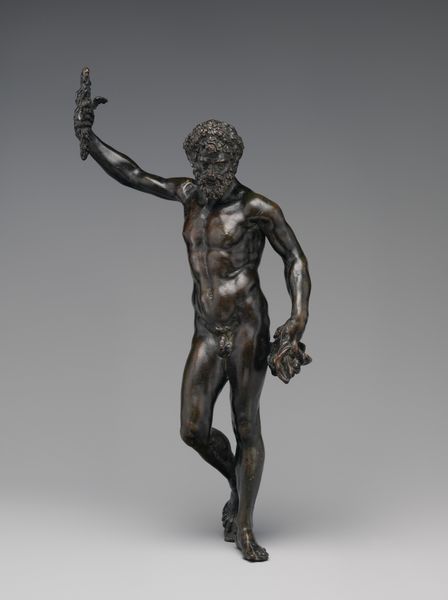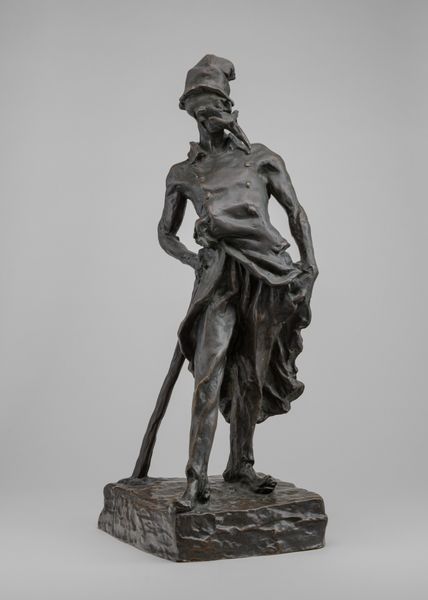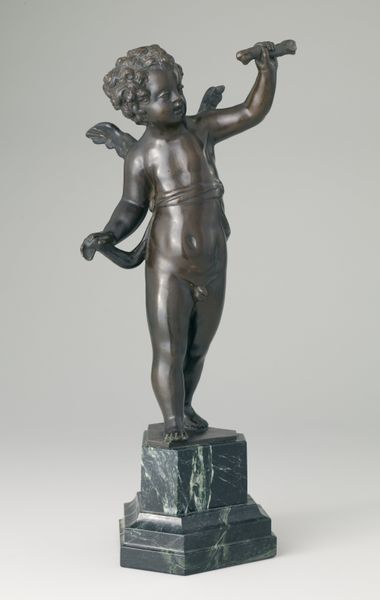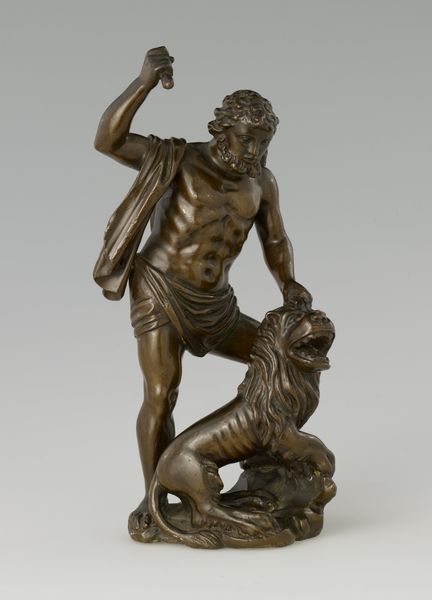
metal, bronze, sculpture
#
metal
#
sculpture
#
bronze
#
mannerism
#
figuration
#
11_renaissance
#
sculpture
#
men
#
decorative-art
Dimensions: Overall (confirmed): 9 1/2 × 6 1/8 × 6 in. (24.1 × 15.6 × 15.2 cm)
Copyright: Public Domain
Curator: Here we have Andrea Briosco's, or Riccio’s, Kneeling Satyr rendered in bronze during the 16th century. The piece now resides here at The Metropolitan Museum of Art. Editor: What a compelling and slightly unsettling figure. The satyr’s frantic energy is palpable, frozen as he is in metal. I'm drawn to the textural contrast between the roughly rendered hair and beard against the smoother skin of his torso. Curator: Right, Riccio was celebrated for his handling of bronze and innovative casting techniques. This particular piece really showcases how the artistic crafts were flourishing. Consider the lost-wax casting process, a labor-intensive technique. Editor: I see echoes of classical forms, yet infused with the drama and heightened emotion of the Mannerist style. Satyrs, of course, are ancient symbols: liminal beings linked to Dionysus, embodying primal instincts. He seems caught mid-revelry, doesn’t he? One hand clutching what appears to be a syrinx, or panpipes? Curator: He does, yes. Riccio didn't just replicate classical forms; he reinterpreted them through a distinctly Renaissance lens, but notice the positioning of his attributes. Their presentation isn't romanticized, it's actually more confrontational. Editor: I agree. There is an underlying tension, a psychological depth. That almost manic expression combined with his half-human, half-animal nature, suggests something untamed within us all. He serves as a mirror reflecting both our civilized and primal selves. The material itself supports this too, the metal making him somehow otherworldly. Curator: The statuette prompts interesting considerations about its function, perhaps as an ornamental piece for a wealthy collector. Think about the circles in which this Kneeling Satyr may have moved – part curiosity, part celebration of skilled craftsmanship. Editor: Absolutely. Analyzing how enduring myths are reshaped across generations through material objects allows a rich exploration of how culture perpetuates itself. Thanks for offering new insight into these symbols. Curator: Of course! Examining an artwork like Riccio's Kneeling Satyr really enriches our appreciation not just of artistry but also of workshop labor.
Comments
No comments
Be the first to comment and join the conversation on the ultimate creative platform.
